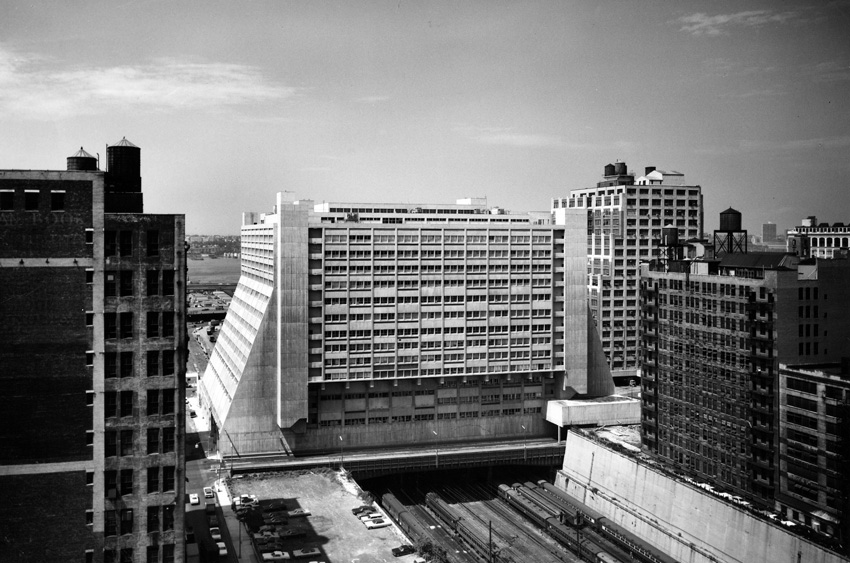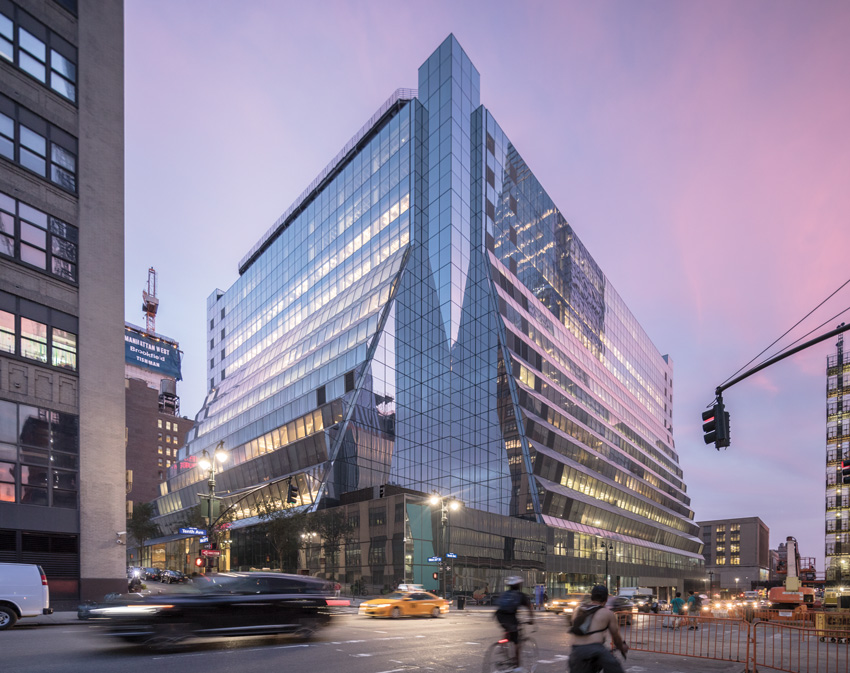Five Manhattan West | New York | REX
Learning Objectives:
- Indicate the reasons the design team of Five Manhattan West opted to employ a pleated facade.
- Identify the type of curtain wall system used in the reskinning of Five Manhattan West.
- Describe the advantages of using a “spreader bar” system for installing the new curtain wall.
- Debate the pros and cons of reskinning buildings from the Brutalist and Postmodern eras in glass.
Credits:
This course is approved as a Structured Course
This course can be self-reported to the AANB, as per their CE Guidelines
Approved for structured learning
Approved for Core Learning
This course can be self-reported to the NLAA
Course may qualify for Learning Hours with NWTAA
Course eligible for OAA Learning Hours
This course is approved as a core course
This course can be self-reported for Learning Units to the Architectural Institute of British Columbia
View course on architecturalrecord.com »
Even before it was built, plans for the Westyard Distribution Center in Manhattan were heralded, with a December 18, 1966, New York Times headline reading “Project Combats Lure of Suburbs.” The article referred to the 15-story building’s more than 32 acres of rentable space, spanning 220 feet like a bridge over Penn Station’s active rail lines, as “an urban rebuttal to arguments for landscaped suburban warehouses.” Upon completion in 1969, the concrete-clad, ziggurat-like design, by Davis Brody & Associates (now Davis Brody Bond) was generally well received, a rare Brutalist structure to instantly garner praise. At the time, RECORD called it “a confident giant standing astride a broad valley.” The magazine pointed out that “a planned 65/35 percent industrial facilities/offices ratio was almost directly reversed, as tenants, taken with the building’s appearance, sought to have more of their offices housed in it” (RECORD, May 1970).


PHOTOGRAPHY: COURTESY DAVIS BRODY BOND; © LAURIAN GHINITOIU, EXCEPT AS NOTED
GLOSS OVER
The reskinned structure (bottom) represents a dramatic transformation from the original concrete building (top, shown
in 1969).
In the nearly 50 years since it opened, both the building, also known as 450 West 33rd, and its neighborhood have changed dramatically. During the 1980s, the facade’s precast-concrete infill panels—into which the windows were integrated—were sheathed in brown-colored metal siding, and the remaining concrete painted beige. The once handsome pile turned into a giant eyesore in what became a bleak part of town. (When the building was planned, then mayor John Lindsay optimistically called West Chelsea the “southern counterpart to Lincoln Center.”)
But the building had an incredible asset—immense floor plates that range from nearly 90,000 to over 120,000 square feet. In recent years, the huge Hudson Yards and Manhattan West developments began to go up immediately surrounding 450 West 33rd, while the elevated rail line just across 10th Avenue was transformed into the High Line park. The former warehouse building, which included floors for light manufacturing, came to be seen as a perfect space to attract higher-paying commercial tenants—as soon as something could be done about its exterior.
Brookfield, developers of Manhattan West, which comprises 7 million square feet of office, retail, apartments, and a boutique hotel in several buildings, acquired 450 West 33rd, rebranding it as Five Manhattan West. It hired Brooklyn-based REX in 2011 to reimagine the enclosure. “The decision to reclad it entirely in glass was driven by a recognition that the market demands natural light,” explains John Durschinger, senior vice president for global design at Brookfield. Since the floor plates are so large, floor-to-ceiling glass was required to get daylight deep inside. “Creative companies that tend to have open-plan offices really value that.”
The building’s sloping sides presented several obstacles, from both an aesthetic and practical point of view. Simply allowing the glass to conform to the existing geometry would have made the new building look like a truncated version of the glassy, pyramid-shaped Luxor Hotel in Las Vegas. What is more important, the majority of the perimeter walls were canted at a 20-degree angle. To provide minimum height for accessible paths of travel required by current code—avoiding head-strike conditions—a sizable floor area would be unleasable. Rather than create a stepped-back facade where snow, ice, and bird droppings could accumulate over the narrow horizontal portions, REX, together with facade consultant Front and executive architect Adamson Associates, pushed the glass panels out in a large horizontal pleat so that the pleat’s joint is above head-strike range.
Working on a building completed almost five decades ago meant working with drawings done on vellum and reproduced on blueprints that disintegrate over time. The structure itself also went through all kinds of renovations over the years, including ones that touched the enclosure—but were only partially or incorrectly documented. “On a daily basis, we found things that no one knew existed,” says REX principal Joshua Prince-Ramus. In one instance, a building survey along the 10th Avenue side of the structure was inaccurate, so an element of the facade there that was designed to 17 inches in the renovation needed to be reduced to under 4 inches. Of course, such unforeseen conditions are typical with retrofit projects. But REX embraced that reality as part of the design. “Instead of worrying about whether the floor slabs were poured to the proper tolerances or whether they had deflected over time, and instead of trying to create a curtain wall in which we would use slab embeds to hold it up, we decided to avoid that entire possible problem and create our own elements.” (Structural engineers at SOM, also part of the design team, advised that the existing structure would be unable to satisfy the deflection criteria.)















